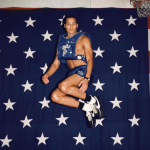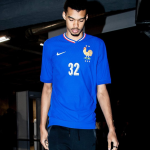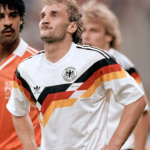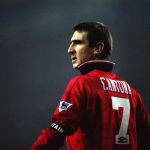
The sunset of polo collar in football fashion
After putting his mark during the 90s the polo collar is completely disappeared from the football pitches
May 8th, 2018
Last week, Nike presented the new Holland shirt, one of the most notable teams excluded from the World Cup 2018. In the presentation pictures shot by Nike, the home shirt - completely orange, a tribute to the national team of total football - seems to have a black collar with two white lines in pendant with the other details of the t-shirt. Many football shirt fans - myself included - have hoped for a moment in the resounding return of the polo collar on one of the fascinating soccer jerseys in the world. Unfortunately, the black collar of the Dutch shooting was just a styled accessory (very streetwear) from Nike, the shirt has no collar but a classic V-cut without black details.
In the last fifteen years, the collar has gone from being one of the essential elements in the design of a football uniform to a veritable chimera on the football pitches of the whole world. From the raised collar of Eric Cantona and the baggy style of the 90s, the times have changed: none of the uniforms for the World Cup 2018 presented has a polo collar, and among the top European clubs only Arsenal this year showed off a very shy lapel.
Why the big brands - especially adidas and Nike - have abandoned the polo design and above all, we will still see soccer jerseys with the collar in the future?
The golden era and the rapid decline
Last week Carlos Rodriguez on Kicks To The Pitch wrote an interesting piece on the sunset of the collar in football fashion, and on the reasons that led to this change of style. The polo became the dominant design layout from the beginning of the 90s when the brands diminished the fanciful experiments of the 80s and 70s style collars. The polo collar was matching perfectly with the baggy style of the 90s: wide sweaters made of synthetic material but still heavy. The style of the jerseys of the 90s was clearly influenced by generalist fashion but still traveled on a separate track, except for Bikkemberges and other small brands, very few blended sportswear with fashion.

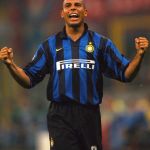
The anti-collar revolution began from the early 2000s when new materials were introduced in the shirts production. The goal of the brands moved towards the technological horizon: the meshes had to be more performing, the priority became the comfort of the athletes. The light and stretch fabrics became the quality standard, making skinny fit shirts and therefore more suitable for no polo collars. Among the most bizarre consequences of this new paradigm, there was that of wanting to highlight the restraints through the stretch fabric of the shirts. The first team to adopt this kind of shirts was Rome in 2004-05, with the uniforms produced by Diadora.

The first years of the new millennium were also those in which adidas and Nike have grown more, dividing among them the sponsorships of the most important clubs in Europe, mainly to the damage of medium-small brands that operated in the national territory such as Umbro, Kappa, Hummel, Diadora and others. The exponential growth of the two giants brought several consequences: the first was that of a progressive standardization of the design of the shirts - for example, even this season the third jerseys produced by Nike are all completely the same - accelerating the end of the collar trend. With some exceptions - for Serie A: Juventus 2014-15 by Nike, Inter 2015-16 Nike, Milan 2009-10 (adidas) - no top club sponsored by the two giants had the collar on the uniform in recent seasons. As reported by Rodriguez, two other elements are decisive to understand the end of the era of the collar: the reference commercial public for shirts is very young and does not appreciate the collar as the generations that lived the football of the 90s; in addition, the big brands prioritize the input of their top athletes and it is no secret to anyone that some of these athletes have described the polo collar as bothersome.
The future of the collar on the football fields
The missed collar of the new Holland uniform produced by Nike has the taste of the lost opportunity by the Swoosh to shuffle and produce a shirt original and different from the others. Despite the dull seasons, the era of ugly shirts seems to have finally ended - have you seen that of Nigeria or Japan for Russia 2018? - the collar is still struggling to re-enter the shirts of the most important clubs in Europe. Among the leaked photos of the uniforms for the next season there is none with the collar, with an important exception: Liverpool, which has already officially presented the new kit. Not surprisingly, the technical sponsor is New Balance, a brand that has recently entered the football market with the need to offer innovative and recognizable products. A possible victory for the Reds' Champions League could make Liverpool 2018-19 a cult object and perhaps help to bring back collars to football shirts. Our hope is that smaller brands will compete with adidas and Nike changing the mainstream design and challenging them on the market.

Another way for the revival of the collar in football are the numerous limited edition shirts that brands and clubs are producing in recent years. adidas for the World Cup 2018 has decided to take full advantage of the football-nostalgia trend with the retro design of all the national sponsors, in the same way many European and South American clubs are producing t-shirts in limited editions dedicated to anniversaries or events to celebrate the history of the club. One of the most successful operations was that of Lazio and Macron that for the 2015-16 season: the shirt with the eagle on the chest inspired by the uniforms of the first Scudetto biancoceleste recorded a boom in sales for the Capitoline club.
Football fashion lovers of the 90s must resign themselves to the fact that it will be difficult to see a shirt of Manchester United with the collar in the coming seasons, but for sure we are still far from extinction.









